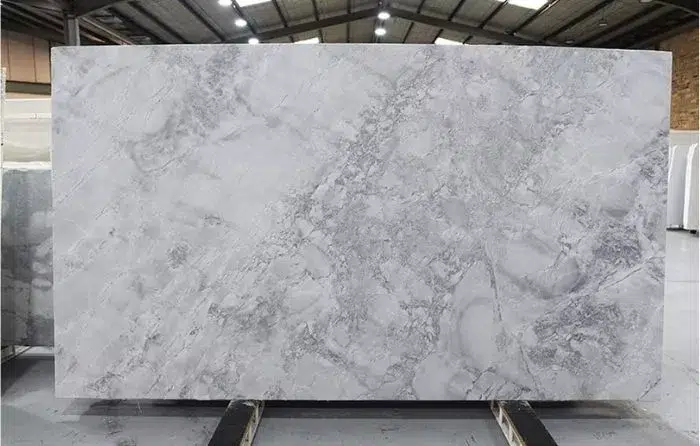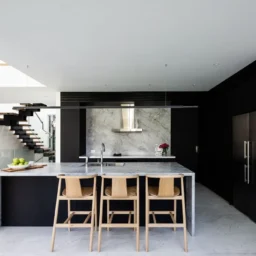
How to Choose the Right Dolomite Wall for Your Space
When it comes to interior design, the walls of a room are a canvas waiting to be brought to life. They’re an integral part of the space, affecting its aesthetics, atmosphere, and practical functions. The selection of wall material is as vital as choosing the right furniture or decor.
Enter the world of Dolomite walls, which offer durability, elegance, and a timeless appeal. This article aims to guide you through the essentials of Dolomite walls, helping you make an informed decision that matches your design vision.
What is a Dolomite Wall?
Dolomite, named after the French mineralogist Déodat Gratet de Dolomieu, is a type of limestone harder than typical varieties. It’s renowned for its stunning natural beauty, marked by its classic white and grey hues, occasionally interlaced with streaks of silver and beige.
A Dolomite wall refers to a wall covered with dolomite tiles or slabs. These tiles or slabs can adorn various spaces – from a cozy living room to an elegant office environment, imparting a warm, sophisticated appeal. Their versatility extends beyond aesthetics; Dolomite walls are durable and can withstand wear and tear, making them an excellent investment for your home or office.
Dolomite wall design possibilities are virtually endless, owing to the different sizes, shapes, and finishes available for Dolomite tiles and slabs. Whether it’s a contemporary setting requiring sleek, polished dolomite tiles, a rustic space inviting honed finishes, or a feature wall calling for dramatic, oversized Super dolomite slabs, there’s a dolomite product to suit the unique design requirements.
These walls are not only appreciated for their aesthetic versatility but also for their functional benefits. Dolomite has excellent heat resistance, making it a preferred choice for fireplaces or kitchen backsplashes. It also has a certain level of resistance to water and humidity, although sealing is recommended for spaces with frequent water exposure like bathrooms. The amalgamation of these properties makes Dolomite walls an ideal candidate for a myriad of applications within a residential or commercial space, increasing its value and appeal over time.
Why Choose Dolomite for Your Walls?
Choosing the right material for your walls significantly impacts your space’s functionality, aesthetics, and overall atmosphere. Dolomite, a natural and robust stone, emerges as a preferred choice for many homeowners and interior designers due to its unique combination of practical benefits and innate beauty.
- Resilience and Durability: One of the key advantages of Dolomite is its remarkable strength and durability. It’s harder than common limestone and fares well under extensive use. Its dense composition equips it with the ability to resist damage from daily wear and tear. Be it in a bustling kitchen, a busy hallway, or a frequently used bathroom, Dolomite walls can hold their own against regular usage and time, remaining beautiful and functional for years.
- A Palette for Every Aesthetic: Another striking feature of Dolomite is its soft, neutral color palette. Its standard white and grey tones act as a sophisticated canvas, easily complementing various decor styles and color schemes. Whether you’re inclined towards a minimalist Scandinavian style, a lively Bohemian aesthetic, or a traditional farmhouse ambiance, Dolomite walls can harmonize with your desired theme, adding to the overall visual coherence of your space.
- A Celebration of Natural Beauty: However, the true allure of Dolomite goes beyond its durability and versatile color palette. Each slab or tile of Dolomite carries its unique patterns – a testament to its natural origins. The distinct veining and tonal variations across each piece are essentially Mother Nature’s artwork, ensuring no two Dolomite walls are the same.
These subtle design elements add unparalleled depth and dimension to your walls, which are impossible to achieve with synthetic materials. The natural streaks and veins in Dolomite walls interact differently with light, creating a dynamic visual experience that changes as the day progresses. In well-lit spaces, the Dolomite wall can serve as an interactive element, reflecting and refracting light, adding an enchanting charm to your rooms. - A Sustainable Choice: Furthermore, as a naturally occurring resource, Dolomite is a more sustainable choice compared to many modern synthetic materials. It doesn’t require extensive processing, which means its production has a lower environmental impact. For those seeking to make eco-friendly choices in their interior design, Dolomite presents a green option without compromising on aesthetic appeal or functionality.
Pros and Cons of Dolomite Walls
As every coin has 2 sides, Dolomite too has a plus and a minus side to it, so while choosing it is very important that you keep in mind both sides and choose wisely.
Pros
- Durability: Dolomite, being harder than regular limestone, is highly durable. It can withstand daily wear and tear, making it an ideal material for high-traffic areas like hallways and living rooms.
- Aesthetic Appeal: Dolomite’s classic white and grey hues give it a timeless beauty. The unique veining and streaks add an element of elegance and individuality to each tile or slab.
- Versatility: The neutral tones of dolomite make it a versatile choice that can complement various design styles, from minimalistic modern to rustic farmhouse.
Cons
- Cost: High-quality dolomite can be more expensive than other wall materials, which could be a barrier for some budgets.
- Maintenance: Dolomite, while durable, is porous and can be prone to staining. It requires sealing and regular maintenance to keep it looking its best.
- Susceptibility to Acidic Substances: Acidic substances can etch the surface of dolomite, so it’s essential to clean spills promptly.
Types of Dolomite Walls: Tiles vs. Slabs
Choosing between dolomite tiles and slabs for your walls requires a deep understanding of the characteristics, benefits, and potential drawbacks of each. Both options have their unique charm and offer different visual effects, and your decision will depend on the specifics of your space, budget, and design vision.
Dolomite Tiles
Dolomite tiles are typically smaller pieces of stone, usually fashioned into square or rectangular shapes. These tiles come in a variety of sizes, from tiny mosaic pieces to larger formats, offering a vast spectrum of design possibilities.
One of the main advantages of using dolomite tiles is their flexibility in design. The smaller size allows for more intricate layouts, patterns, and designs. Whether you want a simple grid pattern, a sophisticated herringbone arrangement, or an ornate mosaic design, dolomite tiles can cater to your creative instincts.
Tiles are also generally easier to handle and install, making them a practical choice for DIY enthusiasts. Besides, in case of damage, replacing a single tile is easier and more cost-effective than replacing an entire slab.
However, dolomite tiles will require more grout lines. While these lines can add to the overall design, they also mean more maintenance, as grout needs to be cleaned regularly and can sometimes become a breeding ground for mold and mildew in moist areas.
Dolomite Slabs
On the other hand, dolomite slabs are larger, continuous pieces of stone. Slabs provide a seamless and clean look that’s often associated with luxury and opulence. They allow the natural patterns of the stone to flow unhindered across the wall, creating a mesmerizing and high-end aesthetic. If you have a large wall area, a dolomite slab can make a stunning statement.
Slabs also have fewer grout lines, which can lead to less maintenance in the long run. They can also provide a more hygienic surface, especially in kitchens and bathrooms, where they won’t provide small crevices for bacteria or mold to grow.
However, there are a few factors to consider. Slabs can be more challenging to install due to their weight and size, requiring professional handling. They’re also usually more expensive, both in terms of the material cost and installation fees. Plus, if a slab gets damaged, the repair can be more complicated and costly.
Choosing the Right Dolomite Wall for Your Space
When choosing the right dolomite wall, consider the room’s size, style, and function. In larger rooms, dolomite slabs can make a stunning statement. In smaller spaces, tiles can make the room feel more intimate and intricate.
Consider the lighting too. Dolomite, with its white and grey hues, can brighten up spaces with little natural light. In spaces with abundant light, the stone’s natural veins can create mesmerizing light and shadow plays.
Your overall color scheme also matters. Dolomite’s neutral tones can serve as a perfect backdrop for bold furniture or accent pieces, allowing them to shine. On the other hand, dolomite can be the star of the show in a minimalistic or monochrome design.
Maintaining Dolomite Walls: Tips and Tricks
While dolomite is a durable stone, it requires maintenance to keep its beauty intact. Here are some tips:
- Sealing: Dolomite should be sealed to protect it from staining. This is especially important in areas where it might come into contact with staining agents, like kitchens or bathrooms.
- Cleaning: Use a soft cloth and a mild, stone-safe cleaner for routine cleaning. Avoid acidic or abrasive cleaners as they can damage the stone.
- Immediate Cleanup: If spills occur, clean them up immediately to prevent potential staining or etching.
- Regular Inspection: Check for signs of staining or etching regularly. If you notice any damage, consider reaching out to a professional to address it.
Conclusion
Choosing the right wall material is crucial to creating a space that’s both beautiful and practical. Dolomite, with its durability and aesthetic appeal, can be an excellent choice for your walls. It offers versatility in design, and a range of options with tiles and slabs, and can elevate any space to a new level of sophistication.
Like any natural stone, it requires care and maintenance, but with the right practices in place, a dolomite wall can serve as a timeless piece of beauty in your space for years to come.
Remember, the essence of design lies in the details. So, whether you’re aiming for a dramatic transformation or a subtle upgrade, dolomite could be the secret ingredient that brings your vision to life.


